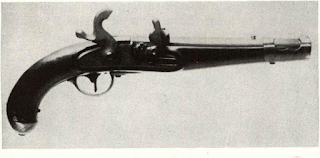Among relative rarities are also the few single shot
the lock, date for Justice but not too late for some
A prior model of Austrian pistol also saw limited
 |
| Perrin revolver is one of War’s rarities; 550 were received |
the lock, date for Justice but not too late for some
A prior model of Austrian pistol also saw limited




Comments
Post a Comment